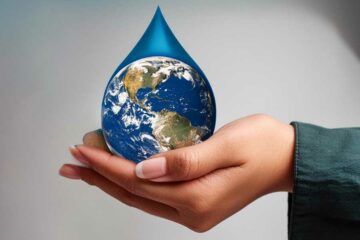If you’re trying to find your footing and do your part when it comes to preserving our planet, it may be a little overwhelming at first to get all of the terminologies down. Leading a sustainable lifestyle doesn’t have to be super intimidating or overly complicated, though.
While words like “biodegradable” and “carbon footprint” are constantly being thrown around in discussions surrounding the environment, you may not know what exactly it all means.
Here are sustainability terms and meaning, plus, when and how they play into your day-to-day lives.
Carbon Footprint
A carbon footprint is a term used to describe the number of greenhouse gases, specifically carbon dioxide, to support human activity like driving a car or using electricity.
“When we breathe, we release carbon dioxide, which is a greenhouse gas. This is essential for our survival, so although this activity releases a greenhouse gas, it is unavoidable,” says Dr. Kuppuswamy, who explains that other types of consumption like driving cars are not as essential.
“Driving a car requires the consumption of petrol or diesel, when this liquid burns, it releases greenhouse gases. This is counted as part of each person’s carbon footprint. So, the sum total of all the activities that one does, which lead to the release of greenhouse gasses into the atmosphere, is known as the carbon footprint.”
There are a number of resources available to help you calculate your personal carbon footprint. Most times, your footprint is divided into at least three categories: home energy, transportation, and waste.
The Environmental Protection Agency offers an accurate carbon footprint calculator through a spreadsheet while sites like Footprint Calculator offer a more visual and interactive experience
Sustainable
This is probably the most recognized and important word on this list.
To be sustainable means you prioritize the use of natural and renewable resources rather than contributing excess amounts of waste from things like coal, gas, and oil that can impact future generations.
Per the United Nations, renewable resources that help our environment include:
Solar energy: converts light into electricity with panels facing the sun.
Wind energy: creates energy from moving air using large wind turbines.
Geothermal energy: uses heat from Earth’s interior as an energy source
Hydropower: uses water from reservoirs and rivers to provide drinking water, hydrate plant crops, control floods and droughts, help with navigation, and create energy by being pumped into a generator through a pipe.
Ocean energy: waves and currents that produce electricity or heat
Bio-energy: uses wood, charcoal, and dung to produce heat, power, and agricultural crops.






